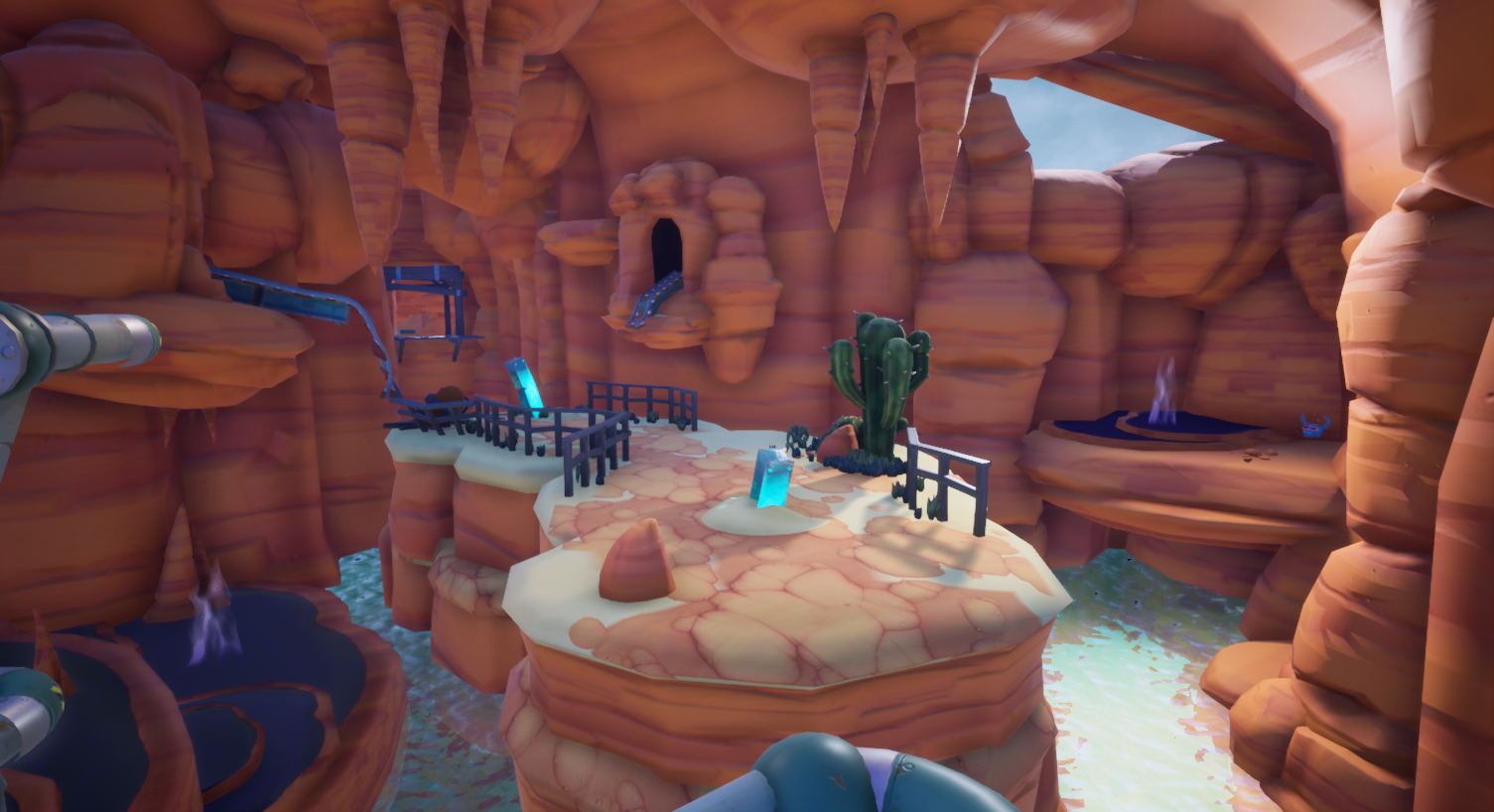
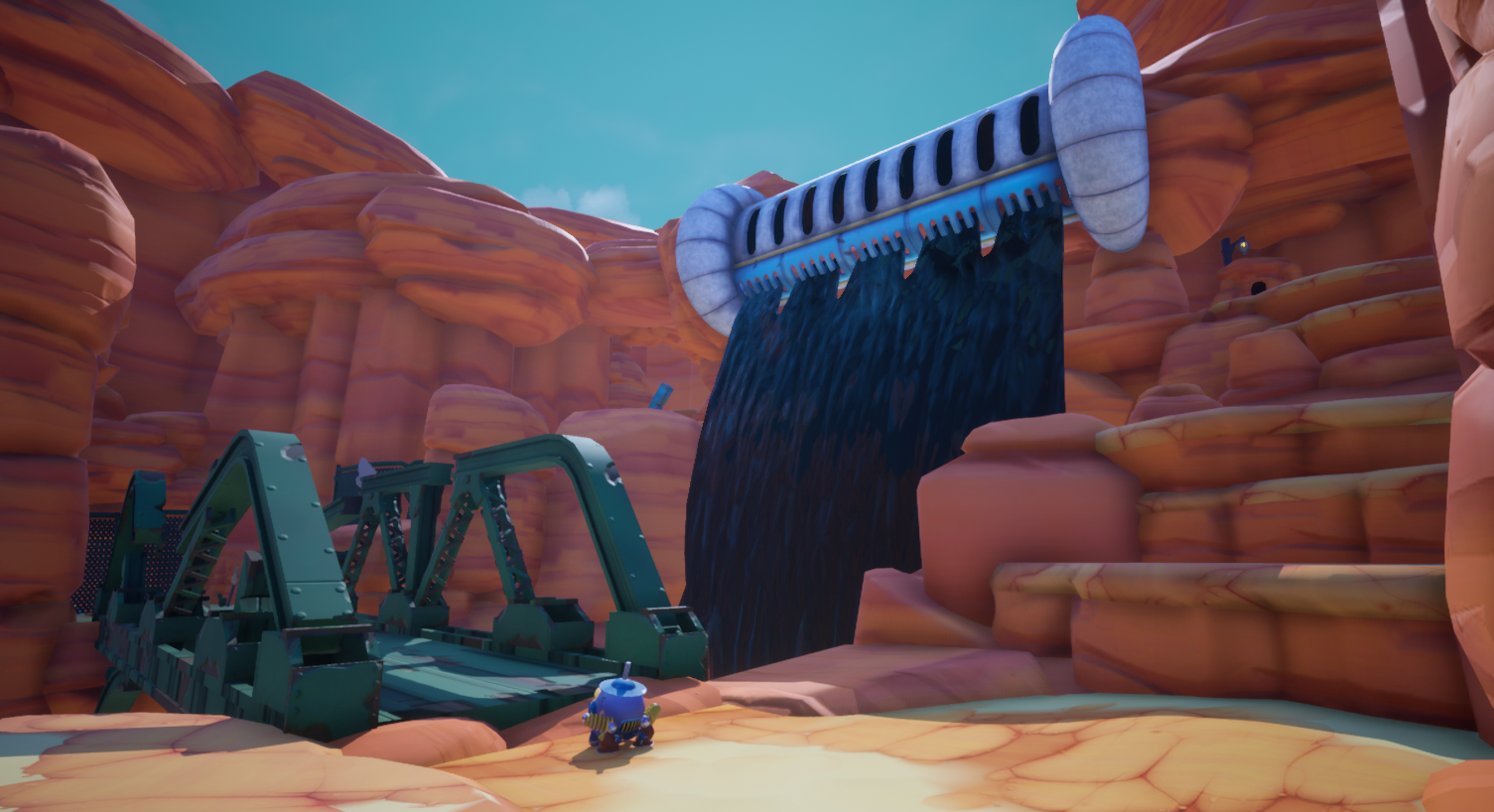
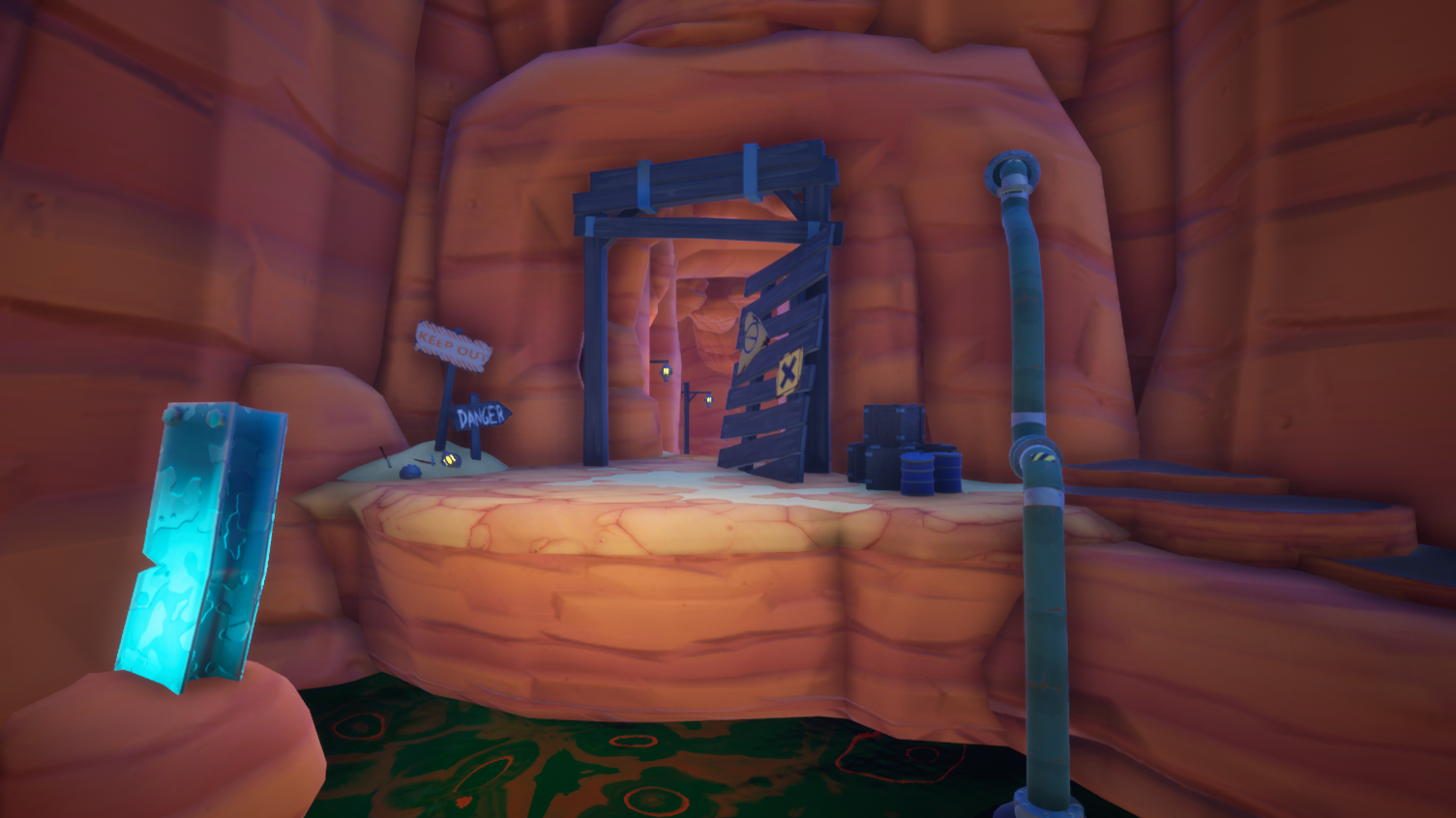
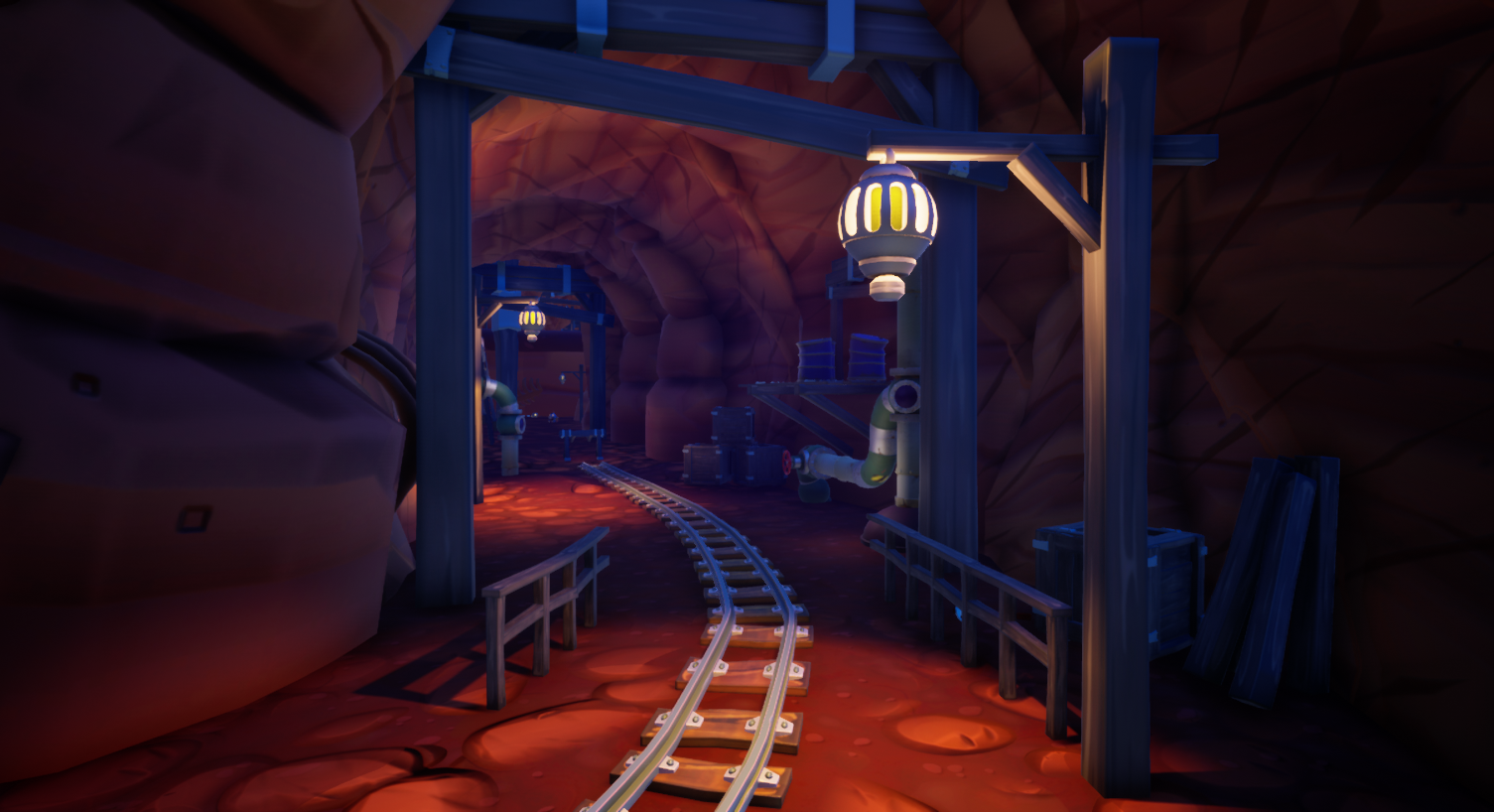

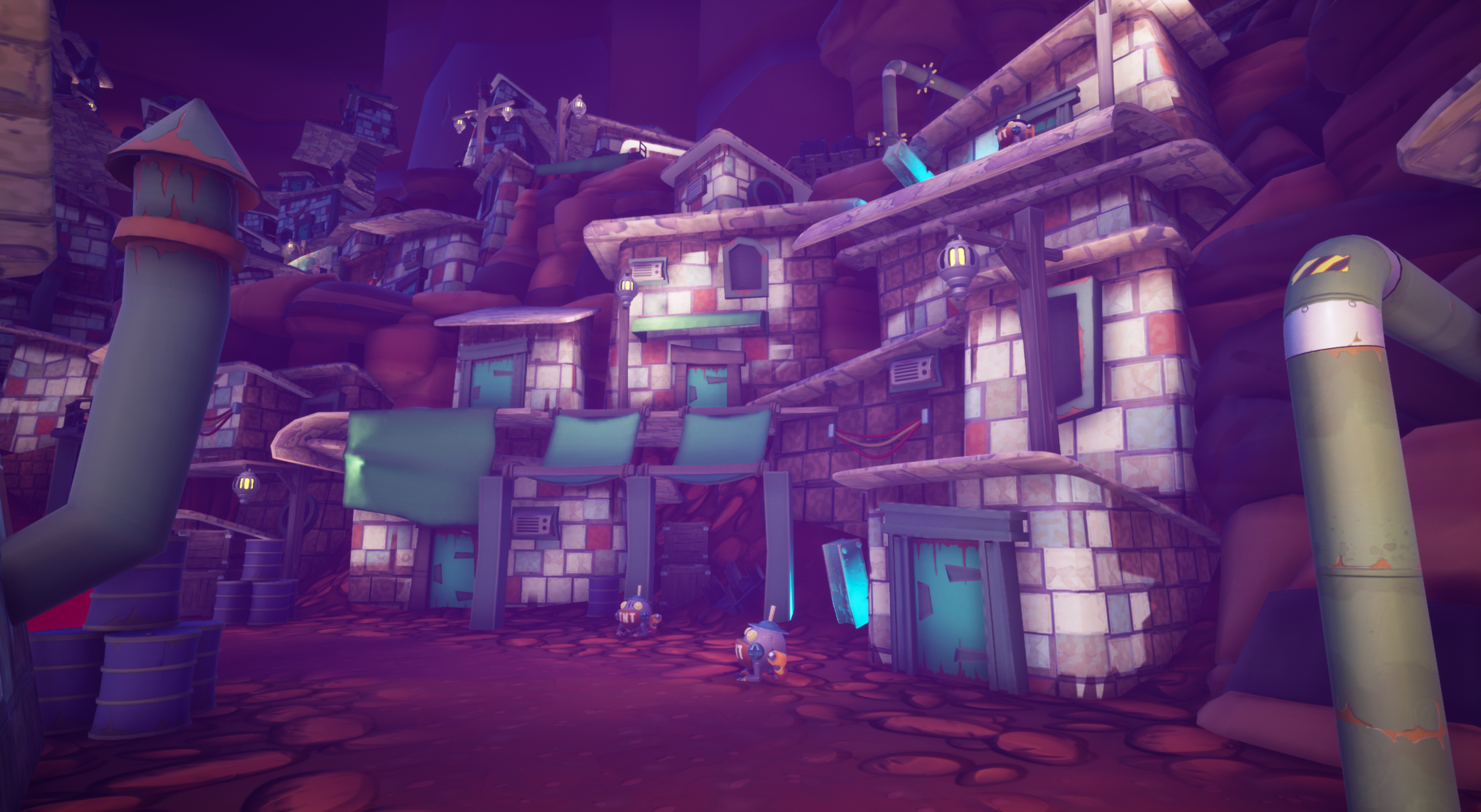
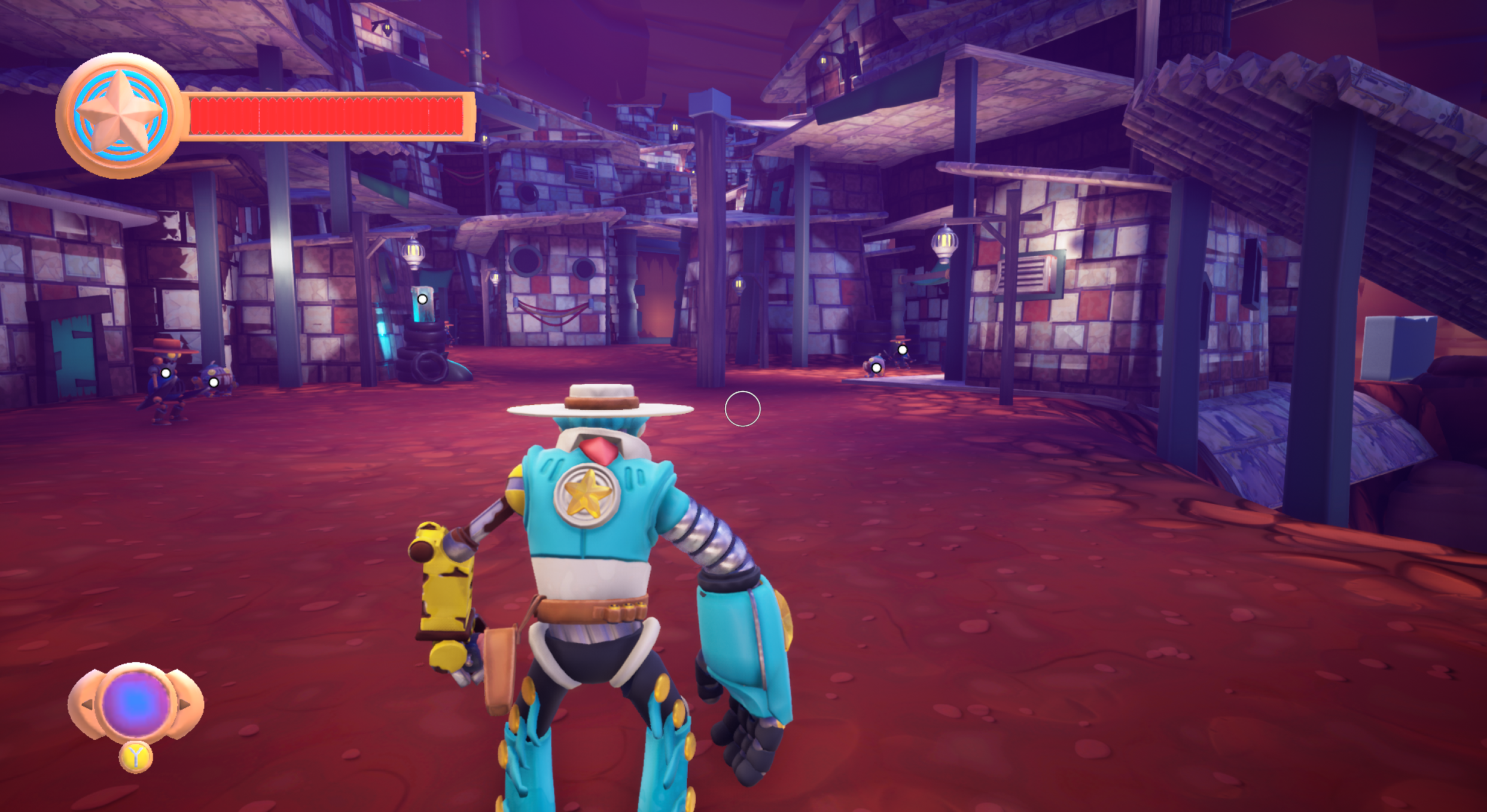
Role: Lead Level Designer
Time frame: 8 months (January 2018 - August 2018)
Team Size: 18
Engine: Unreal Engine 4.19
Genre: Third-Person, Action Platformer
Platform: PC (full controller support)
Sketched the map as a base for the design to iterate upon.
Spoke and met with the Lead Game Designer frequently to solidify the order in which to teach the mechanics to the player.
Combined assets together to build special props that would be used throughout the level.
White boxed the layout of the sketched map to block out the space, adjusting for the character jump height and grab distance.
Received feedback from the artists and other designers on the team about the scale of certain rooms. Took that feedback and iterated on scale until the artists and designers were satisfied with the space.
Set dressed the environment. Received feedback and began iterating on the environmental set dress in order to give more life and tell a narrative through the environment.
Applied the use of a vertex painting material on certain floor and platform meshes to give a sense of direction and a direct path.
In Long Arm of the Law, I was in charge of designing and set dressing 3 major areas of the game: the Canyon, the Mines, and Shanty Town. Each section had it’s own purpose for game play, and thus had to be designed with specific mechanics in mind. The Canyon served as the player's tutorial space for a majority of the game's mechanics as well as introduced our first enemy in the game: the TNToad. It also served as our team's vertical slice of the game in order to nail down the game's aesthetic. The Mines served as an introduction to secondary mechanics, such as mine cart interactions, steam pipes, and swinging around certain objects in the environment. It also introduced the second enemy in the game: The Miner. Shanty Town was the area created to be the game's main playground, where the player had free reign to explore the area. It was a culmination of all the mechanics the player has learned in order to solve 5 puzzles and pull the levers that connect to the waterfall in the back of the area.
As I was designing the Canyon and Mines, I decided to try and follow a two main rules that I commonly found in platformers when designing puzzles.
The first rule was to always introduce a new mechanic with minimal consequences. This way, the player can learn the mechanic and feel comfortable with it.
The second rule was to use the same mechanic in another puzzle, but in a more hazardous situation. This would test the player’s knowledge of the mechanic and also increase the difficulty.
An example of how I used these rules was the steam pipes in the Mines. The steam pipes were introduced when the player drops down into the mines. The player can avoid the steam in two main ways: shooting the valve of the connected steam pipe, or waiting until the steam stops and run through. In this first section, the player can easily navigate through the pipes by foot as there are no other dangers the player needs to worry about at the moment. If the player gets caught in the steam, Motor takes damage. The second section has the player jump into a mine cart, triggering the mine cart to move to its destination. Along this mine cart ride are more steam pipes, which the player must shoot the valve in time to turn off the steam before Motor passes through. The final section repeats the mine carts and steam, but now the player must also pay attention to incoming TNToads attacking them. As I was building this level, I realize that Motor could suffer through lots of damage (and possible deaths), so to help alleviate the problem I had small rooms in between each section that contained enemies that dropped health/energy orbs to help counteract damage taken.
My Process
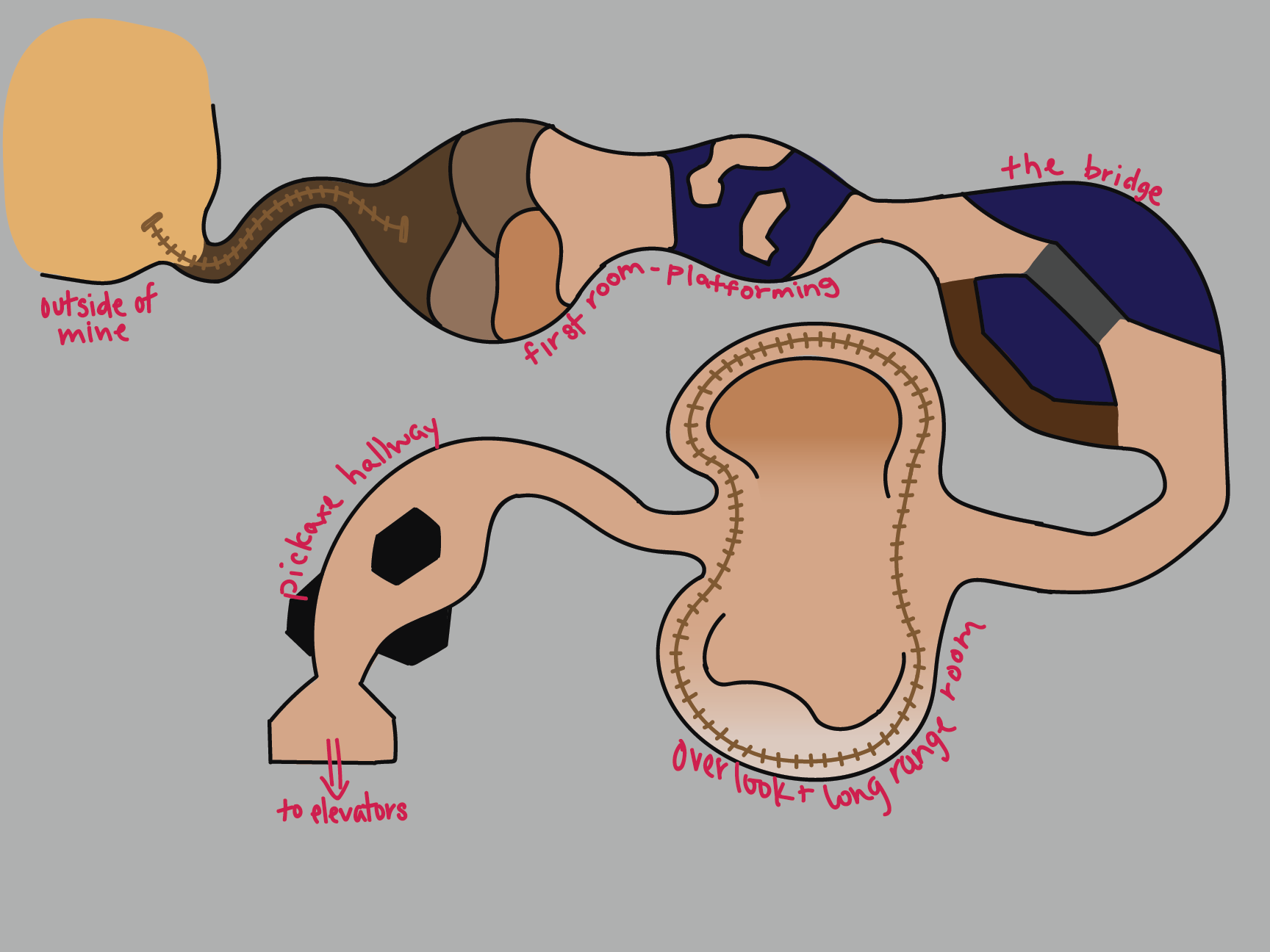
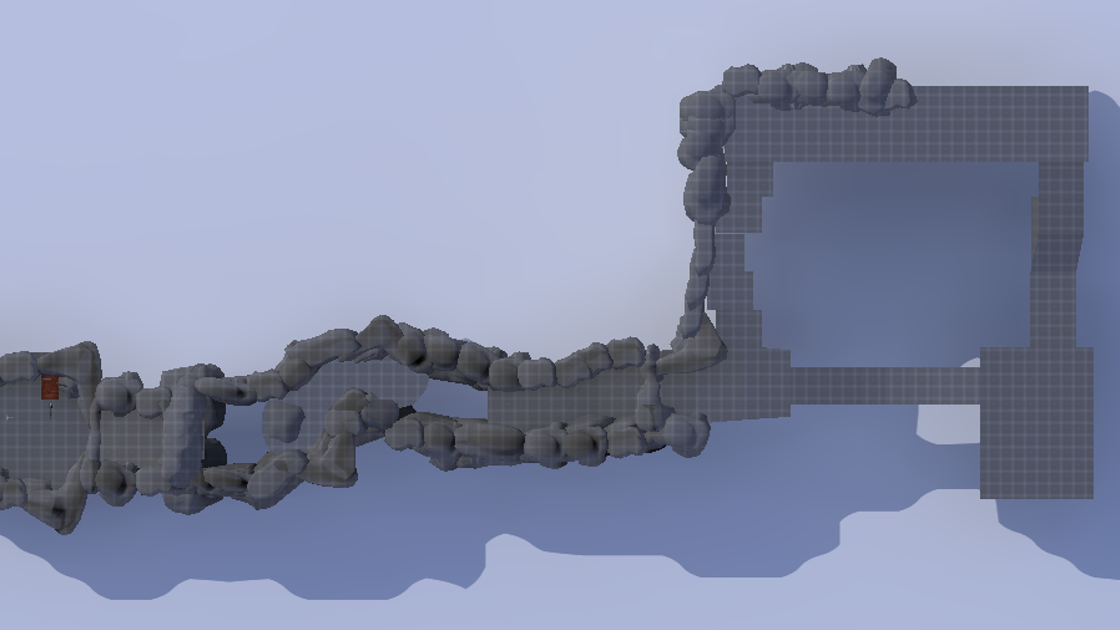
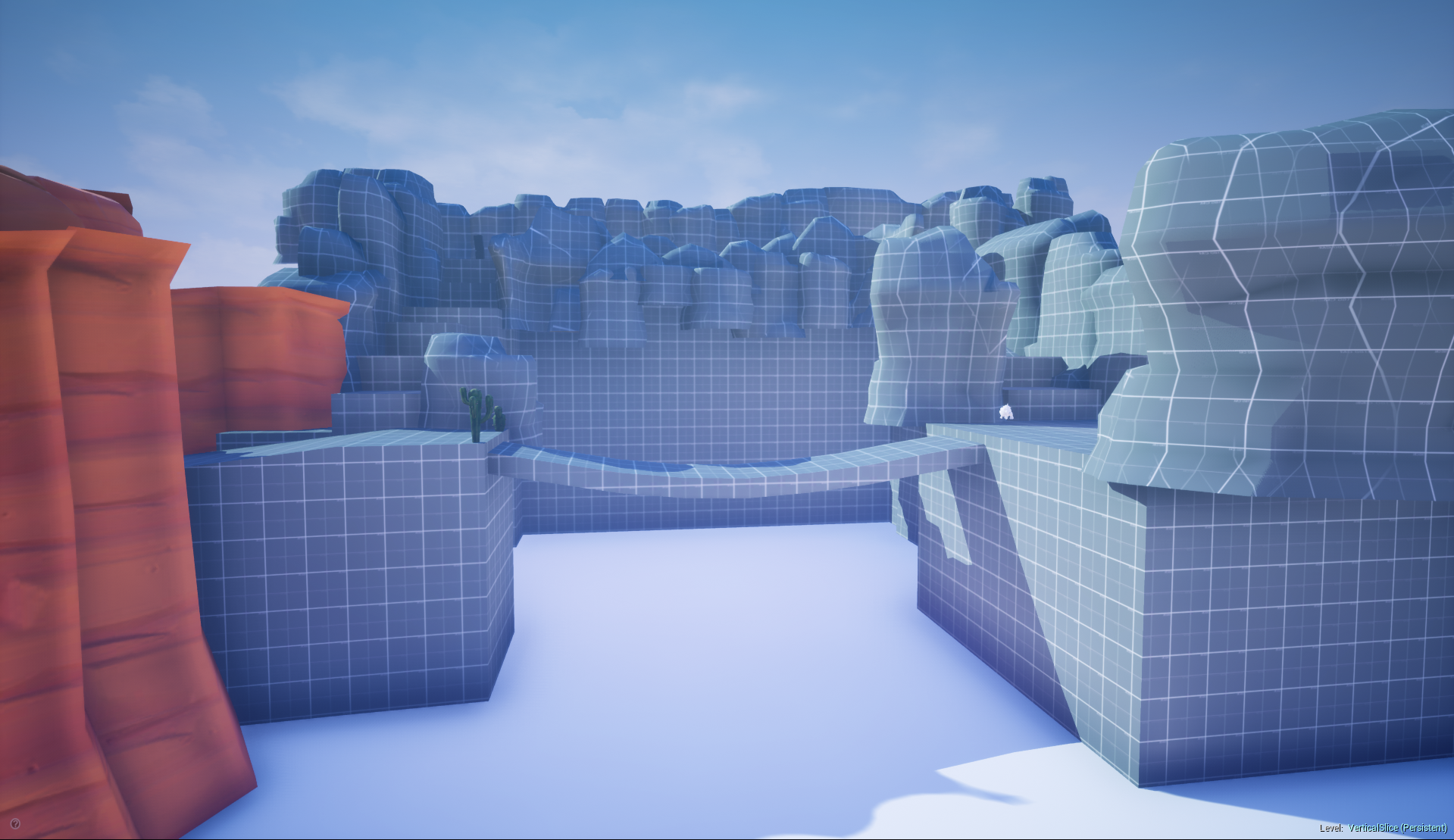
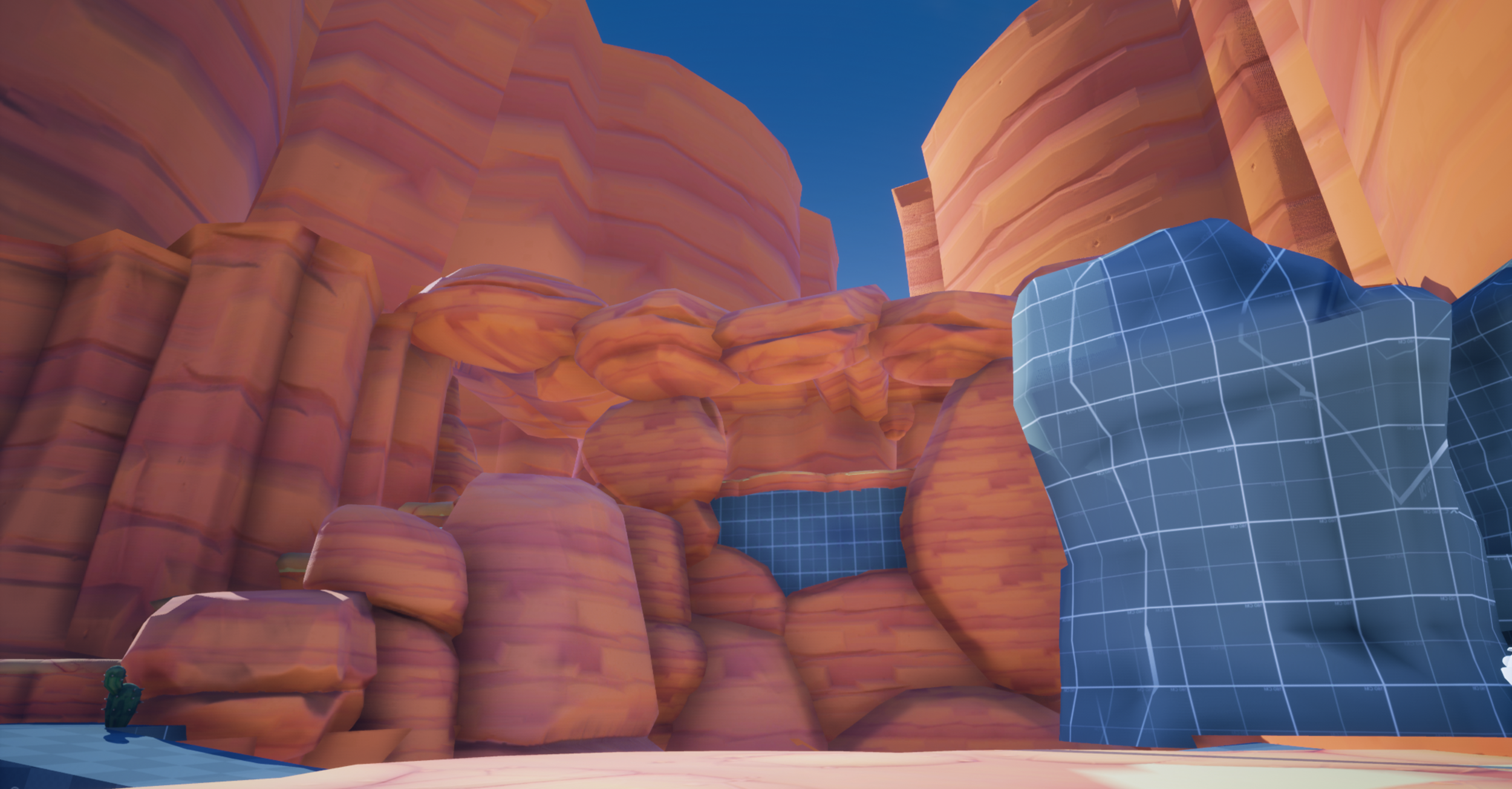
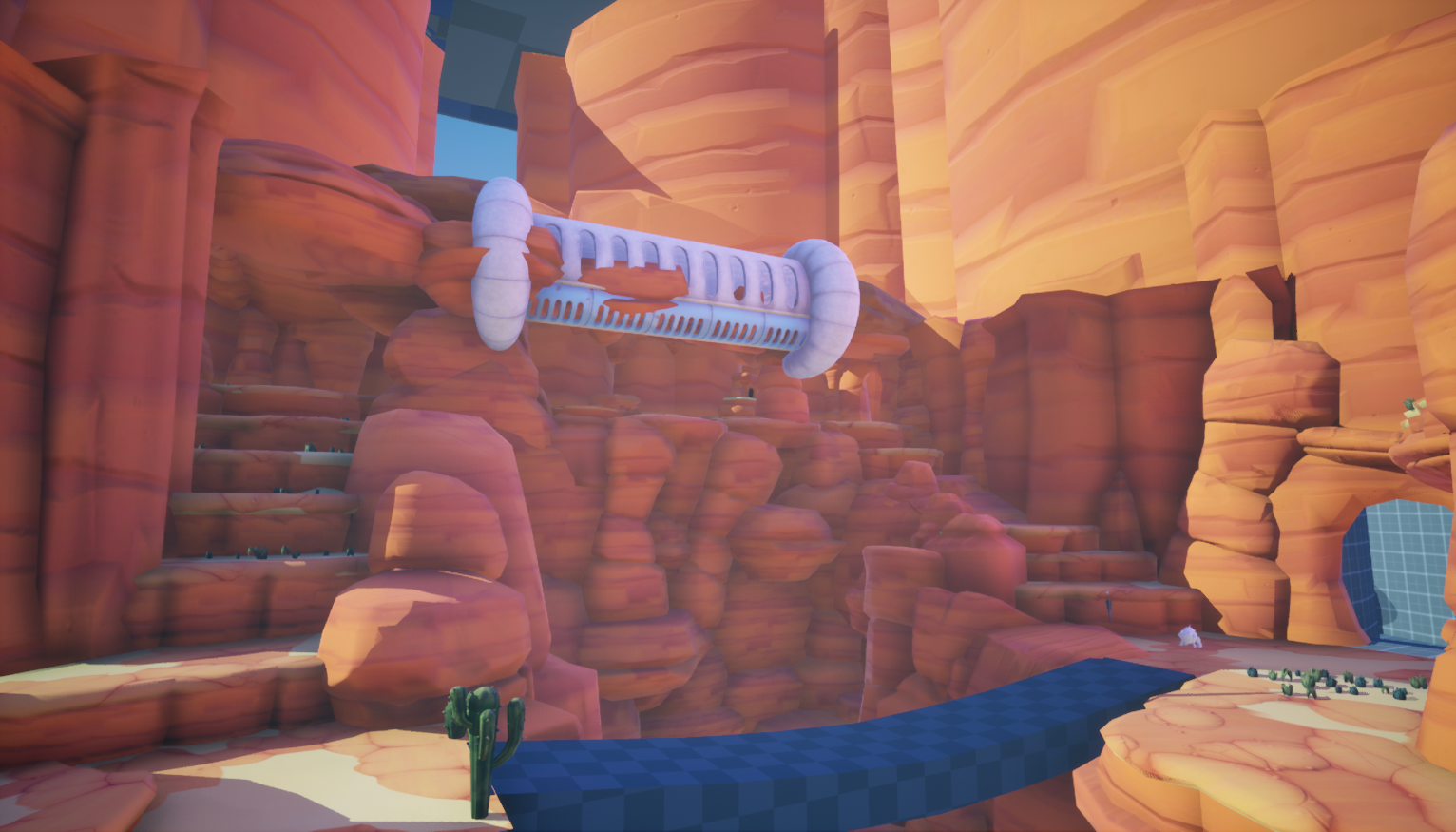
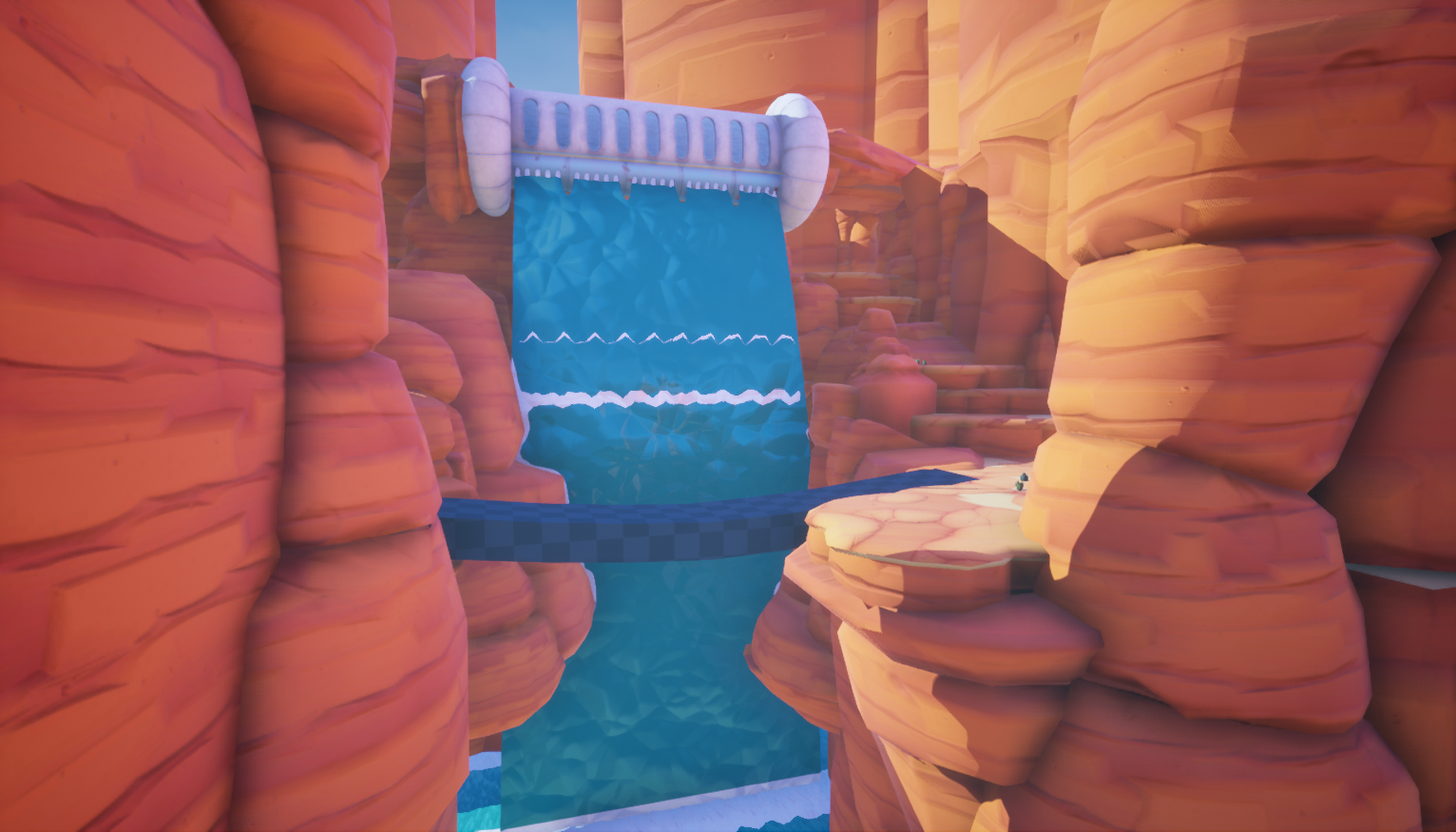
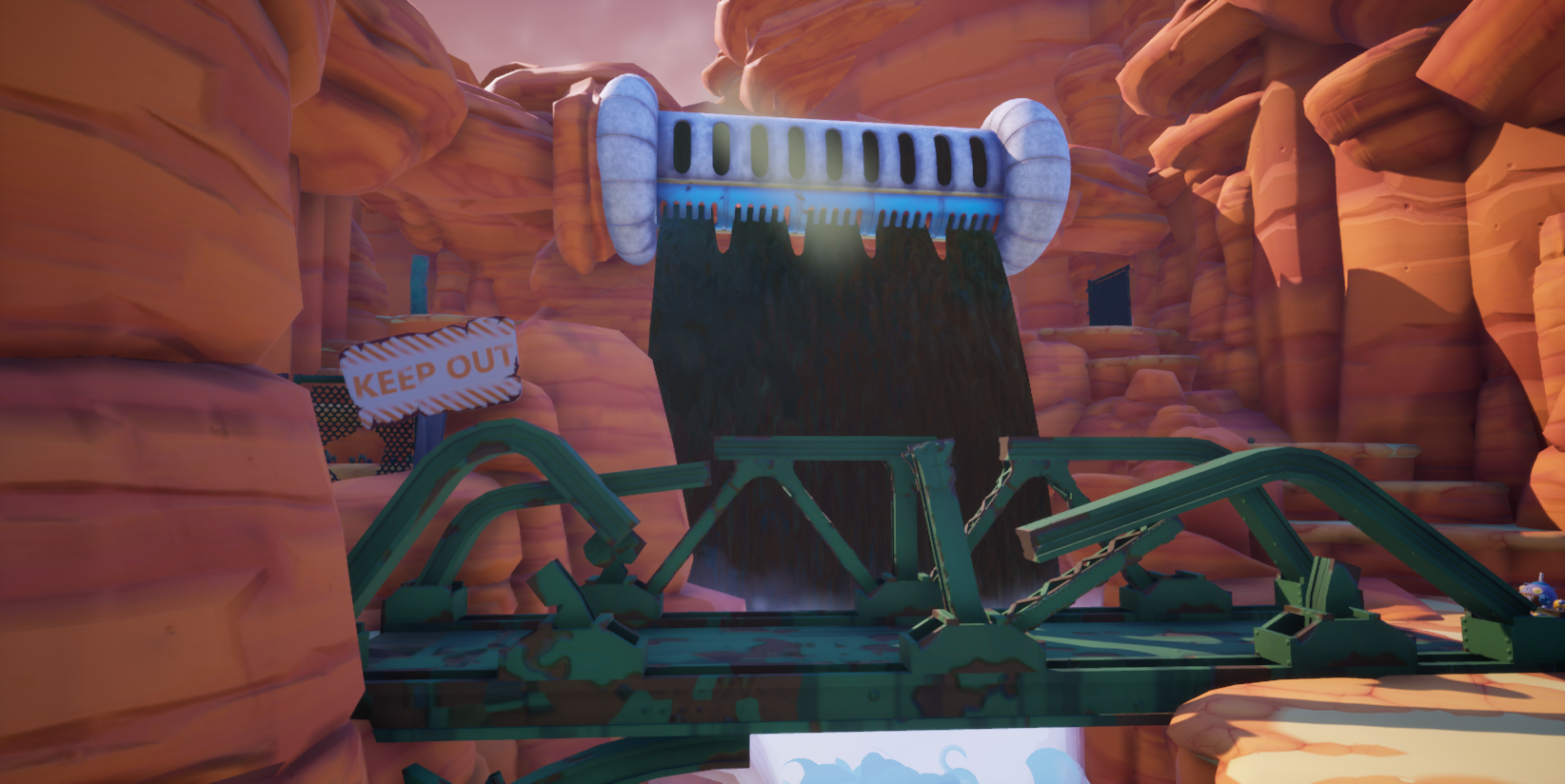
Here is my process on how I went about designing a space in Long Arm of the Law, and more specifically, the bridge section of the Canyon.
I first start out with an overview sketch (either on paper or in Adobe Illustrator) in order to get an idea of how the level is going to be laid out. Here, I have the initial Illustrator sketch as the start. This is usually a first pass and is not the final layout. I get feedback about the sketch from the Lead Artist and Game Designer, and iterate my design off their suggestions.
I then start white boxing the layout, keeping in mind the scale of the character and the length of his arm reach. This is followed by multiple stages of iteration to accommodate the game’s mechanics.
Once art assets start coming in, I begin a first pass in set dressing with the rocks and walls - slowly replacing the white boxed assets. I also make sure to go in the game and make sure the heights are reasonable to the character.
The last step is iteration of the scene’s set dressing and minor changes to layout to accommodate any mechanic changes, art asset changes, and hiding seams. At this point, I also hand off the level to a lighting artist to start the lighting process.
